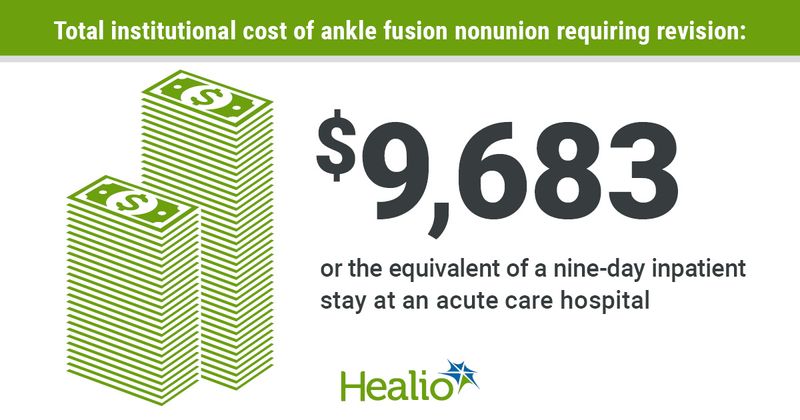Study: Financial burden of ankle fusion nonunion equivalent to a 9-day inpatient stay
According to a review of the institutional costs related to nonunion after ankle arthrodesis, the necessary additional care due to revision has a financial burden of $9,683, or the equivalent of 9 nights in an acute care hospital.
Researchers from Saint-Paul’s Hospital at the University of British Columbia analyzed a cohort of 24 patients with two or more tibiotalar fusions for demographic factors and skin-to-skin time. All patients underwent revision surgery, and all procedures were performed openly.

Cost of revision was calculated using billing codes, length of operation, period of hospitalization and outpatient fees after revision, according to the study.
“The additional costs associated with nonunion were $1,061 for imaging, $627 for prerevision visits, $3,026 for the revision, $3,432 for the hospital stay and $1,754 for post-revision follow-up,” the researchers wrote in the study. “The total mean amount was $9,683, equivalent to 9 nights of acute inpatient stay,” they wrote.
However, despite authors’ estimations, mean skin-to-skin time did not significantly differ between index (114 minutes) and revision (126 minutes) surgery, they added.
The researchers also concluded use of an orthobiologic should be less than $436 to be cost-effective.
“Further research is needed regarding orthobiologic products and their efficacy in reducing the rate of symptomatic nonunion, their harm reduction potential and their cost-effectiveness,” they wrote. “Additional efforts should be directed toward shortening postoperative admissions and developing integrated models of pain management from the intraoperative delivery of care to the community services,” the researchers added.
